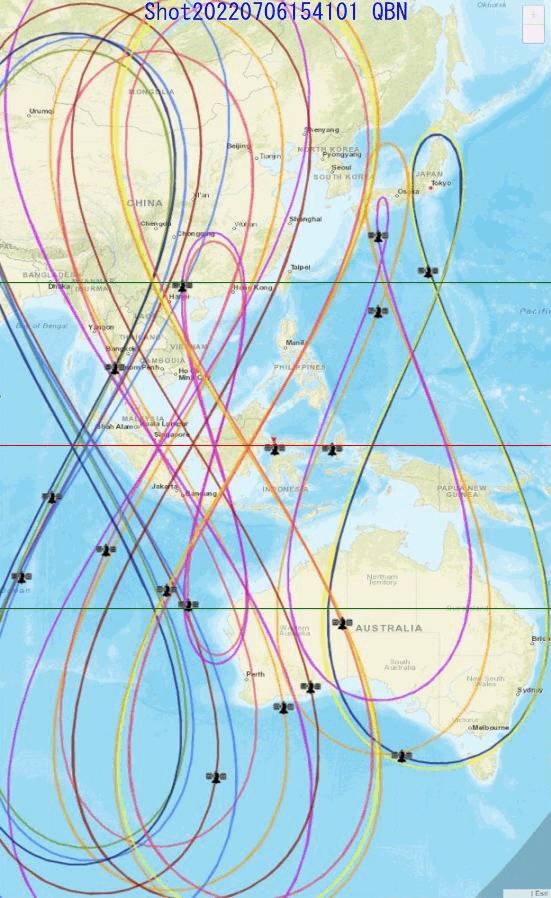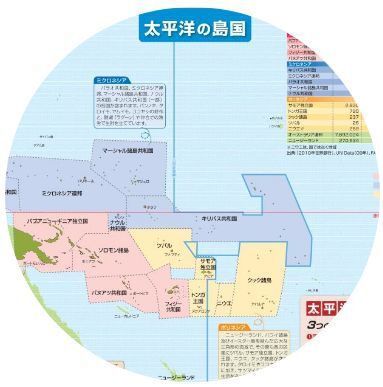24.2.8 GPS World 誌2024年新年1月号の31ページから:
https://editions.mydigitalpublication.com/publication/?i=812827
内閣府 岸本 統久さんのQZSS DIRECTIONS 2024 The Status of QZSSと題する図面満載の4ページにわたる意欲的な記事が掲載されましたので,トップ部分を英文とDeepL和訳文にて引用・記録させて頂きます.将来の11衛星体制とQZS軌道の中央座とその両側の東西座の三座体制が打ち出されています.西太平洋からインド洋まで3座でカバーしてゆこうというQZSSの将来ビジョンをGPS World誌に打ち出したのは素晴らしいです.
QZSS | DIRECTIONS 2024
The Status of QZSS
by Motohisa Kishimoto
SENIOR COORDINATOR, QZSS STRATEGY OFFICE, NATIONAL SPACE POLICY SECRETARIAT, CABINET OFFICE, GOVERNMENT OF JAPAN
Space Policy and QZSS Plan
The Cabinet Office (CAO), which has been developing a seven-satellite constellation (7SV-const.) for QZSS, revised its new basic space policy plan in June. It decided that the number of QZSS satellites should be increased from seven to 11 to improve the stability and reliability of this social
infrastructure by securing a backup function for its coming full-scale use, increasing the convenience of highprecision positioning services, and
decreasing the dilution of precision(DOP).
Brief History of QZSS
Since 2006, MEXT • JAXA, MIC, METI, and MLIT have collaborated to develop the world’s first centimeter-level positioning satellite.
In September 2010, the first QZS satellite, MICHIBIKI, was launched. In September 2011, the cabinet approved a plan to build a four-satellite constellation (4SVconst.) with the goal of building a 7SV-const. in the future. The budget was approved in JFY2012 to promote this as a national project.
In 2017, QZS-2, 3, and 4 were successfully launched and a four satellite constellation was established. On Nov. 1, 2018, QZSS officially began service. On Oct. 26, 2021, the successor to the first MICHIBIKI was launched. Development is underway to sequentially launch three additional satellites for the 7SV-const. from JFY2023 to JFY2024, depending on the development status of the H3 launch vehicle.
To improve resilience for more stable positioning and reduced DOP, CAO has started to study of the expansion of the constellation from seven satellites to 11 (see Figure 1).

QZSS|2024年の方向性
QZSSの現状
岸本 統久
内閣府 宇宙開発戦略本部 QZSS戦略室 シニアコーディネータ
宇宙政策と準天頂衛星システム計画
準天頂衛星システム(QZSS)の7衛星コンステレーション(7SV-const)の開発を進めてきた内閣府は、6月に新たな宇宙基本計画を改定した。準天頂衛星システムのバックアップ機能を確保し、社会インフラの安定性・信頼性を向上させるため、衛星数を7基から11基に増やすことを決めた。
準天頂衛星の本格運用に向けたバックアップ機能の確保、高精度測位サービスの利便性向上、精度の希薄化の抑制など、社会インフラとしての安定性・信頼性の向上を図る。
高精度測位サービスの利便性向上、精度の希薄化(DOP)の低減を図る。
準天頂衛星システムの歴史
2006年から文部科学省、JAXA、総務省、経済産業省、国土交通省が共同で、世界初のセンチメートル級測位衛星の開発に取り組んできた。
2010年9月、準天頂衛星初号機「みちびき」が打ち上げられた。2011年9月、4衛星コンステレーション(4SVconst.)の構築計画が閣議決定され、将来的には7SVconst.の構築を目指す。2012年度には国家プロジェクトとして推進するための予算が承認された。
2017年にはQZS-2、3、4の打ち上げに成功し、4衛星コンステレーションが確立された。2018年11月1日、QZSSは正式にサービスを開始した。2021年10月26日、初代「みちびき」の後継機が打ち上げられた。H3ロケットの開発状況に応じて、2023年度から2024年度にかけて、7SVコンスタレーション用の衛星3基を順次追加で打ち上げるための開発が進められている。
CAOは、より安定した測位とDOP低減のための耐障害性を向上させるため、コンステレーションを7衛星から11衛星に拡大する検討を開始した(図1参照)。

----DeepL.com(無料版)でGPS World 2024 1月号記事のトップ部分を和文に翻訳しました。
https://editions.mydigitalpublication.com/publication/?i=812827
内閣府 岸本 統久さんのQZSS DIRECTIONS 2024 The Status of QZSSと題する図面満載の4ページにわたる意欲的な記事が掲載されましたので,トップ部分を英文とDeepL和訳文にて引用・記録させて頂きます.将来の11衛星体制とQZS軌道の中央座とその両側の東西座の三座体制が打ち出されています.西太平洋からインド洋まで3座でカバーしてゆこうというQZSSの将来ビジョンをGPS World誌に打ち出したのは素晴らしいです.
QZSS | DIRECTIONS 2024
The Status of QZSS
by Motohisa Kishimoto
SENIOR COORDINATOR, QZSS STRATEGY OFFICE, NATIONAL SPACE POLICY SECRETARIAT, CABINET OFFICE, GOVERNMENT OF JAPAN
Space Policy and QZSS Plan
The Cabinet Office (CAO), which has been developing a seven-satellite constellation (7SV-const.) for QZSS, revised its new basic space policy plan in June. It decided that the number of QZSS satellites should be increased from seven to 11 to improve the stability and reliability of this social
infrastructure by securing a backup function for its coming full-scale use, increasing the convenience of highprecision positioning services, and
decreasing the dilution of precision(DOP).
Brief History of QZSS
Since 2006, MEXT • JAXA, MIC, METI, and MLIT have collaborated to develop the world’s first centimeter-level positioning satellite.
In September 2010, the first QZS satellite, MICHIBIKI, was launched. In September 2011, the cabinet approved a plan to build a four-satellite constellation (4SVconst.) with the goal of building a 7SV-const. in the future. The budget was approved in JFY2012 to promote this as a national project.
In 2017, QZS-2, 3, and 4 were successfully launched and a four satellite constellation was established. On Nov. 1, 2018, QZSS officially began service. On Oct. 26, 2021, the successor to the first MICHIBIKI was launched. Development is underway to sequentially launch three additional satellites for the 7SV-const. from JFY2023 to JFY2024, depending on the development status of the H3 launch vehicle.
To improve resilience for more stable positioning and reduced DOP, CAO has started to study of the expansion of the constellation from seven satellites to 11 (see Figure 1).

QZSS|2024年の方向性
QZSSの現状
岸本 統久
内閣府 宇宙開発戦略本部 QZSS戦略室 シニアコーディネータ
宇宙政策と準天頂衛星システム計画
準天頂衛星システム(QZSS)の7衛星コンステレーション(7SV-const)の開発を進めてきた内閣府は、6月に新たな宇宙基本計画を改定した。準天頂衛星システムのバックアップ機能を確保し、社会インフラの安定性・信頼性を向上させるため、衛星数を7基から11基に増やすことを決めた。
準天頂衛星の本格運用に向けたバックアップ機能の確保、高精度測位サービスの利便性向上、精度の希薄化の抑制など、社会インフラとしての安定性・信頼性の向上を図る。
高精度測位サービスの利便性向上、精度の希薄化(DOP)の低減を図る。
準天頂衛星システムの歴史
2006年から文部科学省、JAXA、総務省、経済産業省、国土交通省が共同で、世界初のセンチメートル級測位衛星の開発に取り組んできた。
2010年9月、準天頂衛星初号機「みちびき」が打ち上げられた。2011年9月、4衛星コンステレーション(4SVconst.)の構築計画が閣議決定され、将来的には7SVconst.の構築を目指す。2012年度には国家プロジェクトとして推進するための予算が承認された。
2017年にはQZS-2、3、4の打ち上げに成功し、4衛星コンステレーションが確立された。2018年11月1日、QZSSは正式にサービスを開始した。2021年10月26日、初代「みちびき」の後継機が打ち上げられた。H3ロケットの開発状況に応じて、2023年度から2024年度にかけて、7SVコンスタレーション用の衛星3基を順次追加で打ち上げるための開発が進められている。
CAOは、より安定した測位とDOP低減のための耐障害性を向上させるため、コンステレーションを7衛星から11衛星に拡大する検討を開始した(図1参照)。

----DeepL.com(無料版)でGPS World 2024 1月号記事のトップ部分を和文に翻訳しました。
























